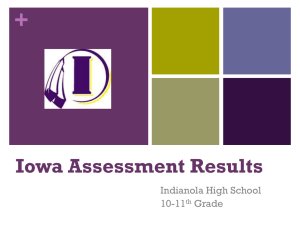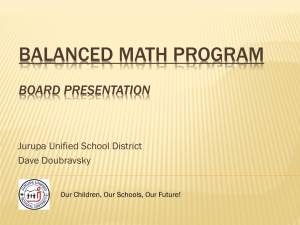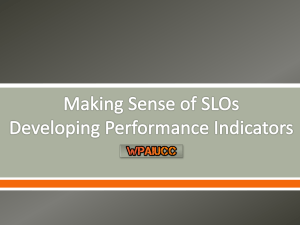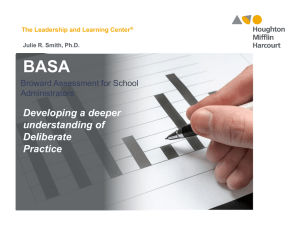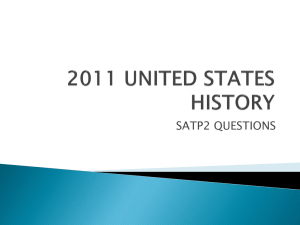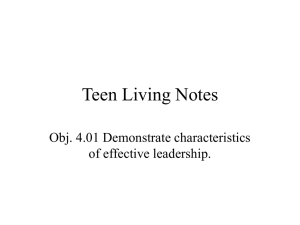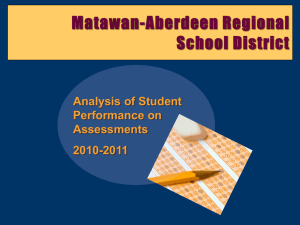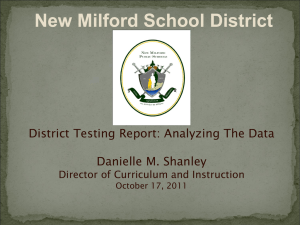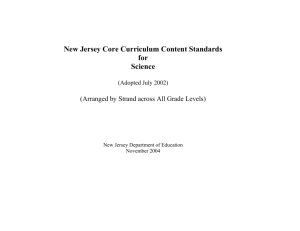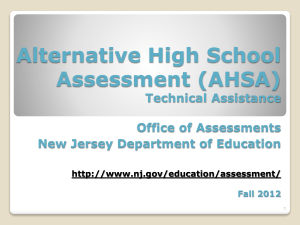Princeton High School State Report Card Interpretive
advertisement
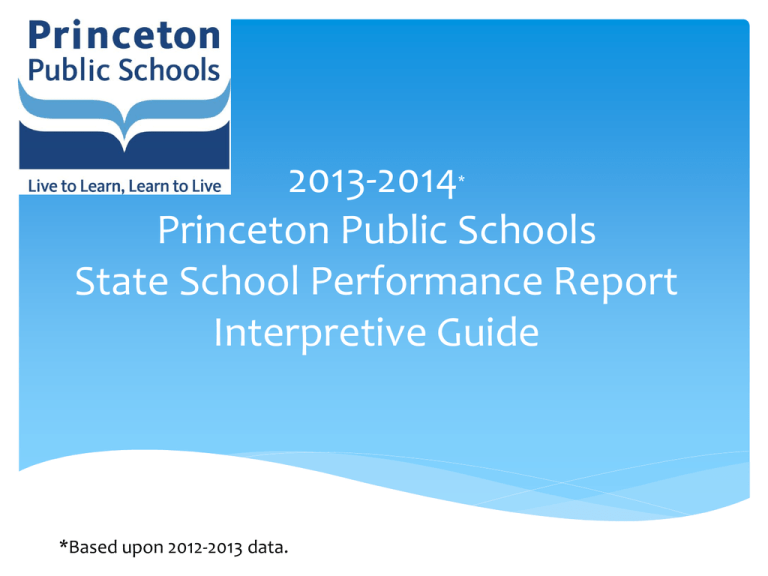
2013-2014 Princeton Public Schools State School Performance Report Interpretive Guide * *Based upon 2012-2013 data. What are School Performance Reports? The reports take the place of the former School Report Cards, which were introduced in 1995 to provide a snapshot of student academic achievement and other important information about a school’s environment, per-pupil costs, and attendance. What’s new about the report? Key features of the new report include: Measuring college and career readiness as well as looking at how students fare once they graduate from high school. Emphasizing growth by tracking both individual student progress from grade to grade and schoolwide achievement in meeting target goals. Comparing peer schools from across the state with similar profiles. The measures… Level Academic Performance is based on: Elementary NJASK College and career readiness is based on: Student Growth is based on: Attendance NJASK Administered grades 3-5 Middle NJASK Administered grades 6-8 Attendance and # enrolled in Algebra I in 8th grade NJASK High HSPA Administered in grade 11 Participation in SAT, ACT, or PSAT, and AP enrollment in English, math, social studies, and science Rate at which students graduate on time, and dropout rate The comparison… Schools are ranked state-wide and in relation to peer schools What are Peer Schools? Schools are clustered in groups of 30 based on: Grade configurations Percent of students eligible for free and reduced lunch Percent of students that are limited English proficient Percent of students that are in Special Education Under this new system, schools are clustered according to more precise demographic information, unlike under the former system, the District Factor Group (DFG), which was based primarily on average income in the community. How does PHS measure up? At the state-wide level, PHS scored either high or very high in all three categories—academic achievement, college & career readiness and graduation rate and post-secondary readiness. At the peer group level PHS scored high for graduation rate & post-secondary readiness. Based upon measures of the school's proficiency rate on both the Language Arts Literacy and Math sections of the HSPA. PHS scored high statewide. In comparison to its peer group, PHS scored very high. Language Arts = 96% proficient (of which 62% were advanced proficient) Math = 96% proficient (of which 66% were advanced proficient) Determined by: AP participation and scores in: English, Math, Social Studies, and Science. SAT or PSAT results. The AP course list from the state is limited to these 4 subject areas. Although all AP courses offered at PHS (18 AP courses total!) are listed on the report card, not all of these courses are considered when the state determines College & Career Readiness. Graduation measures the rate at which students who begin high school four years earlier graduate within four years. PHS Graduation Rate = 94.8% That’s nearly 28% higher than the statewide average and nearly 20% higher than the statewide target! Post-Secondary is based upon the number of graduates who attend an institute for higher education. Some PHS graduates attend post-secondary institutions abroad However, the state only considers graduates attending American institutions and does not take into account students who attend colleges outside of the U.S. Also included is a measure of the rate at which students drop out of school. PHS Dropout Rate = 0.1% PHS Improvement Over Time HSPA Math: Advanced Proficient remained 66% Partially Proficient decreased by 4% (from 8% in 2011-2012 to 4% in 2012-2013) HSPA LAL: Advanced Proficient increased by 8% (from 54% in 2011-2012 to 62% in 2012-2013) Partially Proficient decreased by 1% (from 4% in 2011-2012 to 3% in 2012-2013) Participation in PSAT, ACT, and SAT increased School-wide graduation rate has increased How does JWMS measure up? At the state-wide level, JW scored either high or very high in all three categories—academic achievement, college & career readiness and graduation rate and post-secondary readiness. At the peer group level, JW scored very high in student growth performance. JWMS Performance Over Time 100% of 8th Graders took Algebra I 91% earned a C or higher NJASK Math: Advanced Proficient = 70% (a 6% increase) Partially Proficient = 7% (a 3% decrease) NJASK LAL: Advanced Proficient = 44% (a 4% increase) Partially Proficient = 6% (a 4% decrease) How do Elementary Schools Measure Up? At the elementary school level, the single determining factor of whether or not a child is on track for “College & Career Readiness” is attendance. There are many reasons why this single factor does not accurately indicate how well prepared a given student is for college and career. One that is especially true for the diverse body of students in Princeton Public Schools is that many of the student body miss school days for international travel. “no single assessment can tell educators all they need to know to make well-informed instructional decisions” –US Department of Education, Using Student Achievement Data to Support Instructional Decision Making, 2009 What’s next? Beginning School Year 2014-2015, PARCC will replace NJASK* and HSPA As a result of this change in state testing, current (and past) performance data may not prove helpful in determining district success We look forward to providing you with an analysis of our PARCC data when the results are in. * With one exception: Students will still take the science portion of the NJASK. What matters most? Higher order skills • Curiosity, creativity, critical thinking, problem solving, collaboration across cultures NOTE: These are much more difficult to measure than standard skills (e.g., reading comprehension, information recall) Health and wellness of students and faculty • • • • • High-quality nutrition Fitness Perseverance in the face of challenge Compassion for others Balance PPS is currently exploring these questions related to physical and emotional health: • What is the current state of the health and wellness of the students and faculty? • What can we do to shore up existing wellness efforts? • What new wellness programs should we offer?
